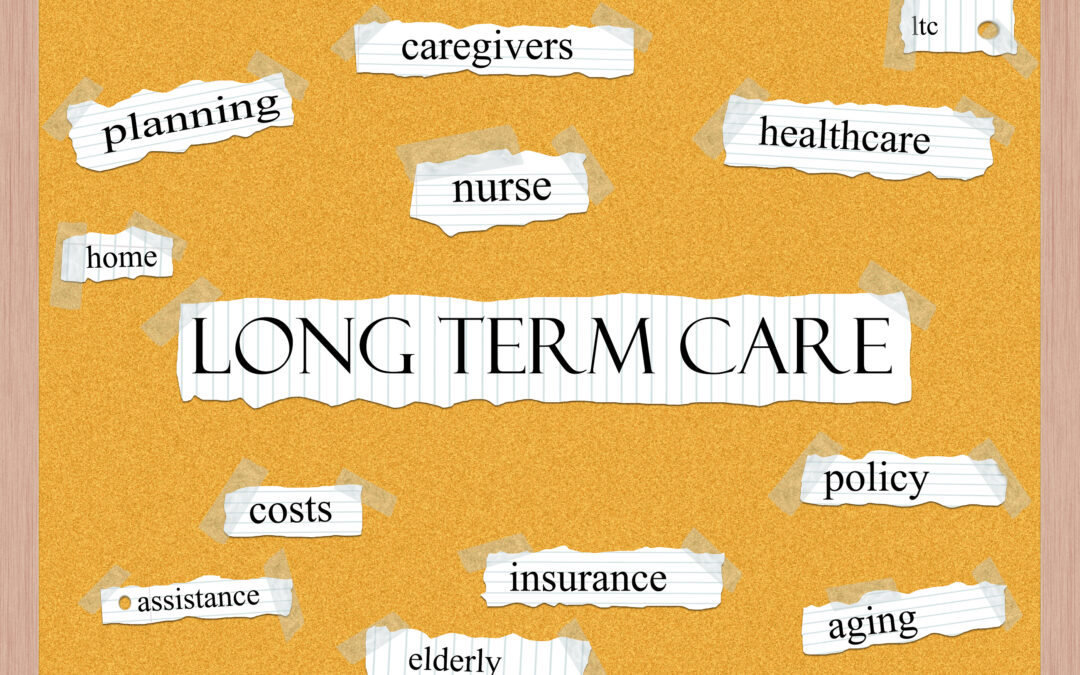Long Term Care Planning
Long-term care planning can feel as daunting as scaling a mountain – the path ahead seems unclear, the costs dizzying, and the whole endeavor shrouded in uncertainty, but there are ways to make the journey less discouraging.
As we age, the need for long-term care planning can become a looming reality. Whether it’s due to declining physical health, cognitive limitations, or simply the desire for additional support, navigating the labyrinth of care options can feel overwhelming. This article will provide a brief over view of the different long-term care planning options as well as the different ways to pay for long term care.
What is Long Term Care?
Long-term care encompasses a variety of services that are designed to meet a person’s needs when a person is no longer able to perform their activities of daily living. The five basic activities of daily living are ambulating (walking), feeding (eating), dressing, personal hygiene (bathing), transferring, and toileting. When a person needs assistance with these activities, it may be time to evaluate long term care options.
Available Long Term Care Options
Long-term care can be provided at home or in a facility. There are several different services that provide long-term care to individuals:
Home Care Agencies or Companion Care
Home care agencies provide non-medical services to people in their homes or living environment. They can provide assistance with non-medical needs such as supervising bathing, feeding, housekeeping, shopping, meal planning, and transportation. These services are usually billed by the hour.
Home Health Agencies
Home health agencies provide health care services to people who are sick or disabled in their home or residence, enabling them to live as independent as possible. These agencies provide services such as nursing, home health aides, and a variety of therapy services. These services are usually billed by the hour or by the service.
Adult Daycare
Adult day care programs offer a supportive solution for seniors who need supervision or assistance during the day while their family caregivers work or attend to personal appointments. These centers provide a safe and engaging environment with supervision, social activities, meals, and recreational programs. Adult day care can help delay the need for full-time nursing home placement. There are two program types to consider: social day care which focuses on activities and socialization, with some health-related services, while health day care offers activities and socialization with additional medical and therapeutic services for individuals with serious conditions. These services are usually billed on a daily rate.
Personal Care Homes a/k/a Family Care Homes
These facilities are small facilities with few residents that provide a residential type setting for individuals who do not need 24-hour nursing care, but are in need of assistance with some activities of daily living, such as using the bathroom, bathing and meals. These services are usually bill at a per day rate or monthly rate.
Assisted Living Facilities
Assisted living facilities have an apartment like setting, allowing for individuals a private living space with help to maintain that independence. These facilities provide meals, housekeeping, transportation services, as well as assistance with activities of daily living. They can also arrange a wide variety of health care services, such as therapy, home health services, and even behavioral health services. These are usually billed on a monthly rate.
Skilled Nursing Centers (Nursing Homes)
Skilled nursing centers provide skilled health care services, as well as room and board, to individuals in need of support to complete their activities of daily living. These services range from skilled nursing, to rehabilitation services and therapy, to custodial care. These nursing facilities accept individuals with complex medical needs that require equipment, such as IVs or ventilators. They also provide assistance with all activities of daily living for those who need total or near total care. These services are usually billed on a daily rate.
Paying for Long Term Care
As you explore these options in your area, you will also be able to determine the costs and how they might be paid for. The availability and costs of long-term care vary from state to state and even place to place within a state. Genworth maintains a website with its yearly Cost of Care Survey that provides an average of cost b y state for particular services.
Personal Funds
Many individuals pay for long term care out of their personal budget, or “out of pocket.” They use personal savings, pensions, retirement funds, income from investments, or even the proceeds from the sale of their home.
Government Programs
Some older adults may be eligible for government health care benefits that cover some of the cost of long-term care. Government programs such as Medicare, Medicaid, PACE (Program of All Inclusive Care for the Elderly), and Department of Veteran Affairs can all help cover the cost of long-term care and other medical issues.
Private Financing Options
There are private programs that can help cover the cost of long-term care such as long-term care insurance, some life insurance policies, annuities and trusts. These options must be reviewed carefully, as it is important to know what the policies do and do not cover.
If you are exploring long-term care options for you or a loved one, contact an elder law attorney to determine how to plan and pay for that care. For a consultation with our office call (850) 894-0152.


